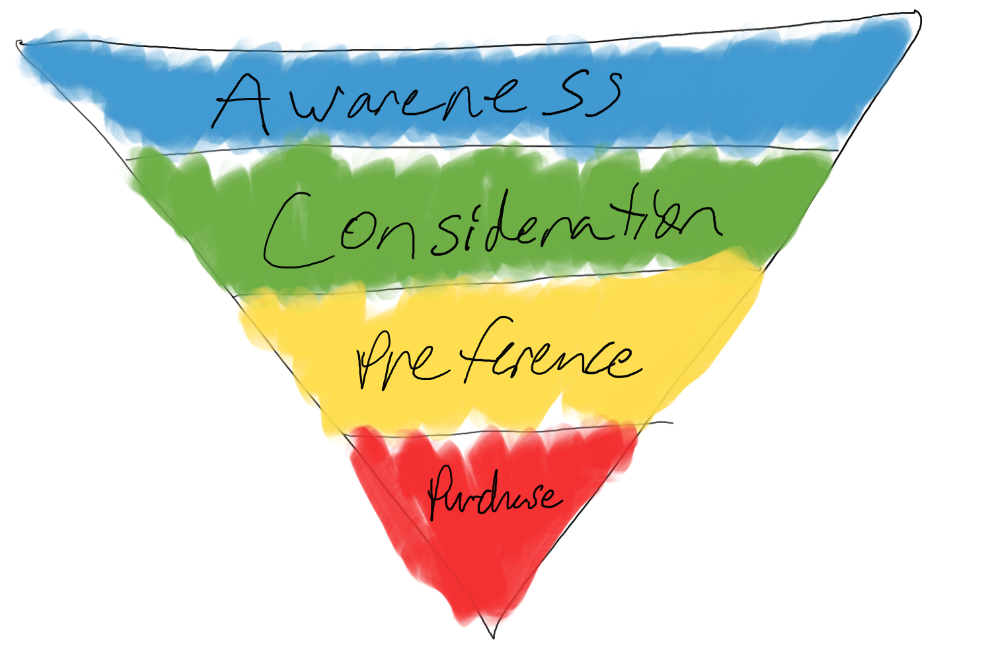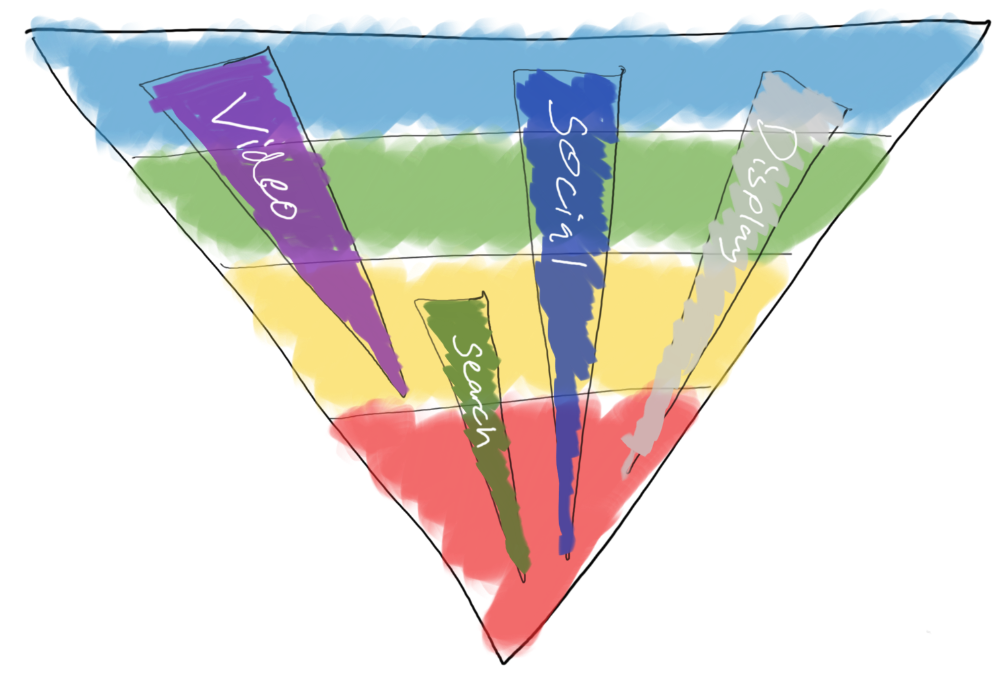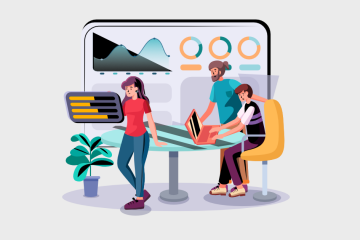Understanding the marketing funnel concept is fundamental to how we as marketers plan campaigns and measure success. It’s a flawed abstraction to be sure, but it’s still one of the better tools we have for understanding and optimizing the customer journey. If you grasp the basics of the funnel, you’re halfway to being able to plan an effective campaign.
For the visual learners in the audience, here is a typical funnel (please note that I drew this myself and is not at all representative of the work of the very talented designers on our team):

Starting at the top and flowing downward: your campaign raises Awareness of a brand, product or category. This is followed by establishing Consideration and Preference for your thing in the mind of the consumer, eventually (hopefully) leading to a Purchase.
Because real life isn’t quite like this textbook example, it’s important to keep in mind a few issues that can confuse inexperienced marketers or clients:
- The misconception that customer journeys are linear. Your customers can bounce all over this funnel (and the funnels of competitors.)
- Customers can enter the funnel at any stage.
- Not accounting for external influences.
- Exacerbating all of this: you will lack a complete view of the entire journey (AKA, The Law of Measurement Is Really Hard To Do.)
None of the marketing inside of this funnel happens in isolation. All sorts of messaging is happening outside of your efforts that influence the awareness and consideration of your customers. These could include advertising from competitors or influencers or word-of-mouth.
Pre-2020, pushing customers into the funnel (say, increasing foot traffic to a fashion storefront) might have been as simple as tossing up a few billboards and posting periodic social media messages. Today, as more businesses recognize that their future might be digital-first or even digital-only, it’s important to understand how the funnel works in a digital strategy.

As illustrated here, each of the common digital channels commonly exist as a “mini-funnel” contributing to the whole effort. Each channel plays a specific role inside the greater strategy. Keep that in mind as you look up and down the graphic.
For example, search is commonly a lower-funnel activity undertaken by the end customer. With exceptions, few people are jumping into Google to search for a specific product if they had not been made aware via one of the other channels, like video or social. They also might have been moved down the funnel via a non-digital channel, and proper attribution for those is really difficult to achieve.
Similarly, few people are moving from a more awareness-oriented medium like video directly into a purchase. For example: if I’m watching a show on Hulu, and I’m interrupted with an ad for a pair of running shoes, I can promise you I’m not clicking away from my episode of It’s Always Sunny In Philadelphia so that I can go pull out my credit card, fill out a lengthy form, and complete the transaction. This is true even if I’m in the market for shoes. There are few advertiser categories which can use video for direct digital conversion. But it’s important to understand that watching that video may have moved me further down the funnel into consideration or preference. If I get served a display or social ad later on (presumably when it’s more convenient for me to convert) I’m more likely to purchase than if I had only seen those display ads in isolation.
Social and display advertising can run the full length of the funnel, and some brands can plausibly use one of these channels as their entire digital strategy. This narrow approach does risk limiting customer reach and potential growth. I generally recommend starting broad (or as broad as the creative budget permits) and only narrowing after results can inform such a decision statistically. Remember your ABMs: Always Be Measuring.
In sum, your digital play doesn’t need to include every platform — far from it. You do need to consider which digital channels make the most sense for your ideal funnel. A local seller of exotic teas should not be buying video advertising, but it absolutely makes sense for them to be using ads on social and search as part of their digital funnel.
Careful planning of will ensure that you have all of the necessary pieces in place (items like platform-specific creative, relevant landing pages, conversion pixels, remarketing, attribution measurement, site analytics, etc.) to understand what works best for moving customers through your funnel (and making the sale.)


